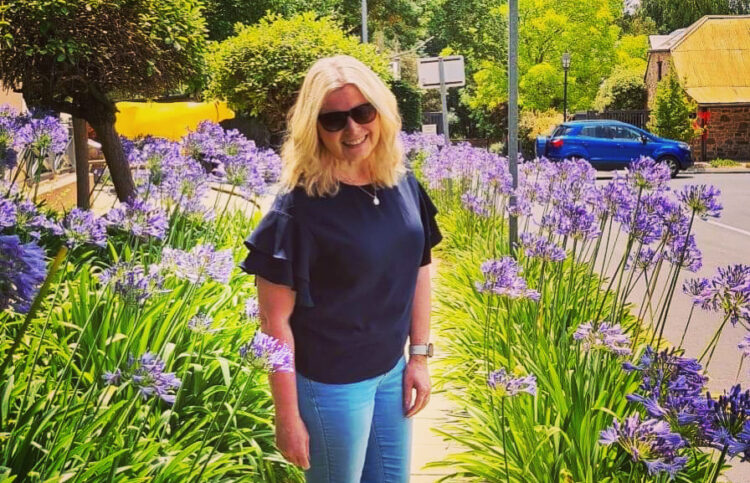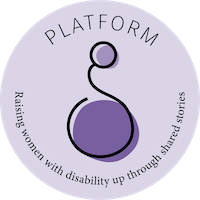Tell us about yourself
My name is Jo and I’m 56 years young.
I live on the traditional Country of the Kaurna people (Adelaide, South Australia) with my partner Lea-ann and two dogs (Cavoodles) – Peanut and Tobi. My 27-year-old daughter lives close by with her fiancé.
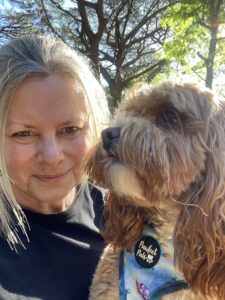
What has been your journey of disability?
I was born with my disability, although I wasn’t formally diagnosed until the age of 45. This was after a very long list of seemingly unrelated and, ironically, disconnected issues. I say ironic because my disability is caused by a genetic change that affects connective tissue in my body … and then obviously everything made sense once the underlying connection was found! 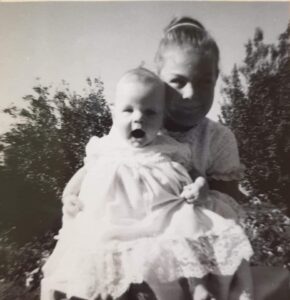
I have Hypermobile Ehlers-Danlos Syndrome (hEDS), one of 13 types in a group of heritable connective tissue disorders. People with EDS have an abnormality in the structure, production and/or processing of collagen – which is literally the glue that holds our bodies together. Connective tissue is found in skin, muscles, tendons and ligaments, blood vessels, organs, and the skeletal system. Each EDS sub-type has its own unique set of symptoms which can behave unpredictably and in various degrees of severity. No matter the type, individuals will present with varying symptoms across their life and will need different types of support. For many, our joints have a greater range of motion and our organs and other structures are vulnerable to damage because our connective tissue is so fragile, a bit like ‘wet tissue paper’ as one surgeon described it to me. One thing is for certain, we’re often surprised where and how a problem will show up.
For me, the first clue was issues with my eyes. At six months old both eyes turned completely inward. As a child, and into adulthood, I’ve been through numerous operations on both eyes and many failed attempts to strengthen those ligaments, leaving constant and sometimes debilitating pain.
“One thing is for certain, we’re often surprised where and how a problem will show up.”
There were many other signs of my EDS as a child where nobody connected the dots such as constant joint pain, joint subluxations, migraines, and digestive issues – but these were all dismissed as attention seeking behaviour. Fast-forward to complications with pregnancies, a dislocated pelvis, a prolapsed uterus, severe endometriosis and adenomyosis, and a leaky heart valve – which was diagnosed as a child but again, ignored.
It was that heart valve issue that required urgent surgery in my early 40s, in the same year I lost my mum to cancer and not long after my hysterectomy. A long period of recovery and depression followed, eventually leading me down the diagnostic path to the underlying issue … who would have thought dodgy collagen was the culprit?
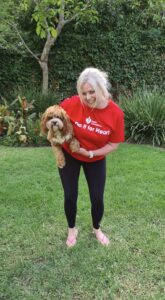
What do you do with yourself?
I manage education and people development programs in the wine industry, and I previously worked as a social science researcher. When I’m not working, I love spending quiet time at home where you will most likely find me gardening, reading, watercolour painting, and listening to music. I’m also slowly writing a novel (emphasis on slowly). My partner and I also enjoy getting out and about in nature with the dogs.
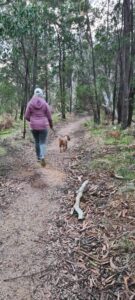
How did you come to be doing what you do?
I’m not sure! I think things evolve with experience and an appreciation for what you truly value, and the type of people you enjoy being around, so you naturally seek that out or it seems to fall into place. I assume qualifications in psychology, literature and public policy helped along the way.
Do you find disability impacts on the work you do or how you do your work?
It only occurred to me quite recently how much internalised ableism I’ve got going on. I feel like an imposter: am I disabled enough to adjust the way I need to live and work? Having an invisible disability plays into this – ‘but you look fine’, is something I often hear. I end up over-compensating, working twice as hard to prove I’m capable. It’s also exhausting taking responsibility for your own advocacy.
“It only occurred to me quite recently how much internalised ableism I’ve got going on. I feel like an imposter: am I disabled enough to adjust the way I need to live and work? Having an invisible disability plays into this – ‘but you look fine’, is something I often hear. I end up over-compensating, working twice as hard to prove I’m capable”
Coming across a relevantly recent term has improved my mindset: dynamic disability. This was my ‘ah ha’ moment. I’m not waiting for the day to be more disabled. I’m already living every day with a disability that fluctuates, I have pain and energy levels that are difficult to predict, and I never know when things will go wrong and how severe they might be. Identifying as dynamically disabled simply means I have a right to adjustments and help if I need it, and I do not need to prove anything … to me, or anyone else.
It’s still challenging, reminding others without an obvious visual cue. Just because they can’t see it doesn’t mean it’s not there.
I travel a reasonable amount for work. I used the Hidden Disabilities Sunflower card for the first time on my last trip. This is a simple and recognised tool to share that I have a condition that may not be immediately apparent but that I may need some help. In an airport this means I can bypass waiting in long queues, take more time to move through security and board early. Those small adjustments mean I’m far less likely to put my body through extra strain it doesn’t need, and ideally far less likely to dislocate a joint.
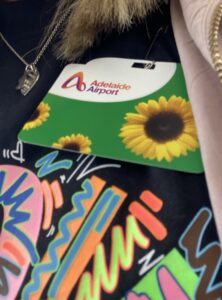
“It’s still challenging, reminding others without an obvious visual cue. Just because they can’t see it doesn’t mean it’s not there.”
How have you become involved in promoting and working with The Ehlers Danlos South Australian support group?
Once I knew I had EDS, the very first thing I did was try to find people like me. I came across an EDS group on an Australian rare disease website and reached out to the other four people that lived in my city. We arranged to meet up for a coffee. I laugh now thinking about how nervous we all were, like a first date – what if we have nothing in common?
From that first catch-up just over 10 years ago, we ended up creating an online support group for all people in South Australia living with EDS – we now have over 700 individuals in that group with a mix of people diagnosed, searching for a diagnosis, carers and specialists and we regularly meet up.
What do you hope to achieve in your role with The Ehlers Danlos South Australian support group?
Far too often many people with rare disabilities spend years searching for answers and being dismissed: ‘But you look normal’; ‘You don’t have that, it’s too rare’; ‘No one knows what that is’; ‘You’re not tall or skinny enough to have EDS’. What comes with this diagnostic odyssey is medical gaslighting, deep trauma, guilt, and anguish.
No two people with the same disability will have the same experience, so sharing our individual stories in a safe, caring space is incredibly important for our emotional wellbeing. More than anything I am so proud that we’ve enabled this, and so much more, through this group. Between us we’ve curated a list of allied health professionals, specialists and GPs who are, at the very least, EDS aware. It’s not perfect, and it doesn’t come close to making the path to diagnosis or management easy or stress free – but it’s a start point.
“Far too often many people with rare disabilities spend years searching for answers and being dismissed”
We use the month of May to raise awareness for EDS, supported by the international Ehlers-Danlos Society. In 2022 I organised several landmarks in Adelaide to light up black and white for EDS , including Adelaide Oval and SA’s Parliament House. It was an incredible feeling.
The Parliament of South Australia Instagram post unleashed a torrent of emotion I was not prepared for – my 55 years of living with EDS validated in that one moment. This was a turning point in awareness, acceptance, making the invisible visible and pride. I was out late that night taking photos of the landmarks when I saw the post, so if anyone noticed a middle-aged woman standing in front of Parliament House on North Terrace in Adelaide bawling her eyes out on a random weeknight in May 2022, that was me.
“The Parliament of South Australia Instagram post unleashed a torrent of emotion I was not prepared for – my 55 years of living with EDS validated in that one moment. This was a turning point in awareness, acceptance, making the invisible visible and pride”
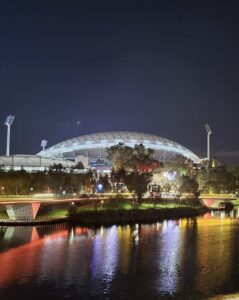
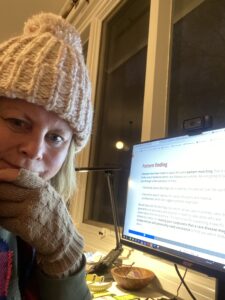
What is your biggest wish for the work the organisation does?
My biggest wish is that this group exists for friendship only, because diagnosis is immediate and pathways to care are vastly improved. I want us to share more stories of success and less stories of frustration. Along with the South Australian support group I’m fortunate to be involved with research projects through Rare Voices Australia. This is an amazing opportunity to elevate advocacy efforts, representing the EDS community nationally. I have hope because there are amazing people and organisations doing incredible things and making a real difference.
Are there things about you that people misunderstand because of your disability?
I’m saying yes; but this is a tough one, partly because it’s my perception of their misunderstanding. I feel it most when people comment on how resilient I am, simply because I look fine. Outwardly I appear capable but on the inside my body is typically behaving completely opposite to what people see. When it comes to being dynamically disabled it’s important to know and accept all versions: this version of Jo ( celebrating and partying at a Kylie Minogue Concert in 2019)
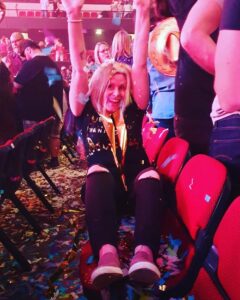
co-exists along-side this one (Jo with subluxated neck joints, day four of migraine and working on video production (some deadlines cannot be moved!)
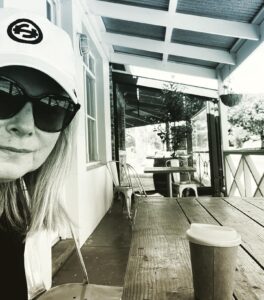
Knowing what you know now, what advice would you give your 18-year-old self?
My 18-year-old self needs to pay close attention to this one …. know when to leave: the job, the relationship, the health professionals who don’t believe you! Don’t be so stubborn, there is no shame in reaching out and asking for what you need. Also, please spend more quality time with your grandparents and parents because one day they will all be gone too soon and you’ll be carrying that grief for a long time.
Is there something that you would like people to know about you or about people with disability that they might not know?
Yes, in one word: complexity. There is no quota on the multitude of specialist’s appointments. Often, after all that time and expense, we simply have to carry on with more questions than answers. Both the knowns and the unknowns weigh heavily on our mental health and wellbeing, which brings with it disappointment and fear. Our ability to withstand all of this, perhaps coupled with a high tolerance for pain, does not equate to being resilient, it equates to doing the best with what we’ve got because there is not always an alternative.
Best advice that you would like to share with other women with disabilities?
Show how much you value and treasure those that seek to understand and walk, sit, support, work and live alongside you – tell them! At the same time cultivate your intolerance for ‘bullshit’ and ableism. Don’t be afraid to speak up and know that you are loved in doing so.
Do you have a way for people to connect or follow you that you would like me to share?
Instagram: @jobi6700
Ehlers Danlos Support South Australia: https://www.facebook.com/groups/347230768713444/?ref=share_group_link

